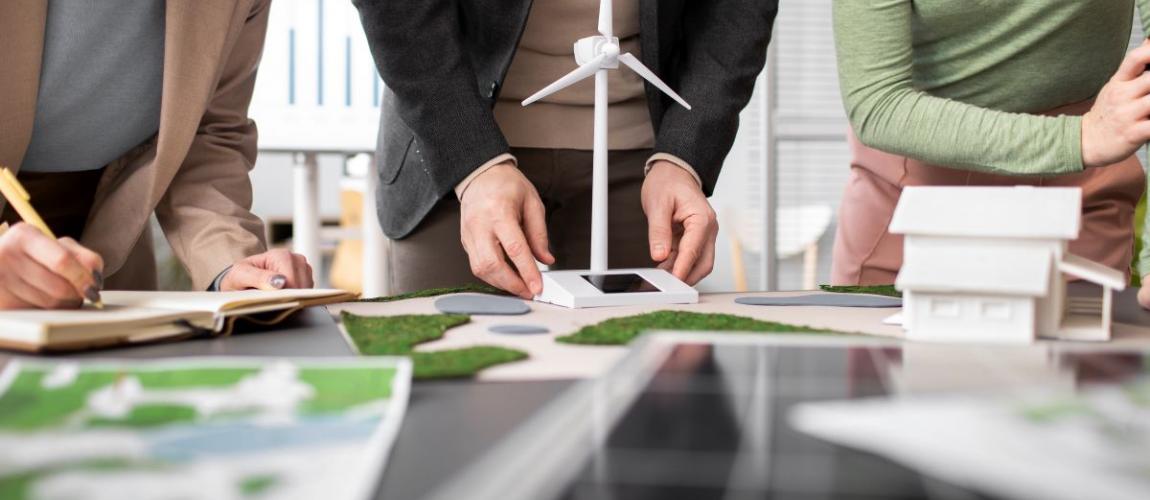Aggregate ERC Activities

Photo Credit: Image by Freepik
On this page: To help ensure success of ERC activities and attract investment, an aggregation facility could provide standardized processes for ERC activities, due diligence the activities, and provide technical assistance to help ensure their effective design and ultimate success. Read more below, or visit Strategic Guidance for Country System Assessments, Guidance for Countries in Assessing ERC Projects, or Mobilizing ERC Finance.
For smaller economies and many subnational entities, an aggregation facility that pools multiple ERC activities can help overcome some of the challenges to accessing finance and attract large-scale private sector capital (Figure 14), including through issuing ERC-backed debt. While some larger sovereigns and subnationals could alone issue ERC-backed debt and attract international capital, it is challenging for many smaller economies (e.g., islands) and subnationals (e.g., smaller provinces or cities) to attract international capital generally and the scale of ERC activities in these jurisdictions may not yet be sufficient to do so. In this context, combining the financing needs for smaller ERC activities across multiple economies or subnational entities could help reach institutional financing and, in doing so, help expand ERC investment to smaller and harder-to-reach segments of the market. Figure 14. Illustration of an indicative ERC-linked aggregation facility structure. An aggregation facility can help mitigate multiple risks for investors, but depending on the underlying ERC activities may raise the potential of concentrating some risks that would need to be managed. Aggregation could permit diversification across ERC activities and reduce the risk of financial loss in the event that one project underperforms or experiences a default that affects the delivery of ERCs. An aggregation facility could also facilitate risk pooling and better access to operational insurance for smaller ERC activities. Diversification could be used to mitigate credit risk and operational risk and may help mitigate market risks if the financed ERC activities range across sectors and types of ERCs. Aggregating projects across countries may help mitigate political and other country risks. However, aggregating across countries would need to manage the potential for compounding ERC-specific political risks if the ERC policy environment (e.g., ERC rights, cross-border trade) is uncertain or faces similar challenges across the invested jurisdictions. A DFI could provide assurance of the underlying quality of the ERC activities and their ability to get ERCs to market as a facility sponsor or key partner. To help ensure success of ERC activities and attract investment, an aggregation facility could provide standardized processes for ERC activities, due diligence the activities, and provide technical assistance to help ensure their effective design and ultimate success. This would be an intensive role for a DFI or similar body but helping expand the market and finance to these hard-to-reach segments of the market is an important and non-distortive role for concessional or philanthropic support, and a role that has played out in other sectors (e.g., community and off-grid solar in EMDEs).

This section is intended to be a living document and will be reviewed at regular intervals. The Guidelines have not been prepared with any specific transaction in mind and are meant to serve only as general guidance. It is therefore critical that the Guidelines be reviewed and adapted for specific transactions. Unless expressly stated otherwise, the findings, interpretations, and conclusions expressed in the Materials in this Site are those of the various authors of the Materials and are not necessarily those of The World Bank Group, its member institutions, or their respective Boards of Executive Directors or member countries. For feedback on the content of this section of the website or suggestions for links or materials that could be included, please contact the Public-Private Partnership Resource Center at ppp@worldbank.org.
Updated:
TABLE OF CONTENTS
UNLOCKING GLOBAL EMISSION REDUCTION CREDIT
1. Introduction to Emission Reduction Credits
• The World Bank's Emission Reduction Program
• Classification of Emissions Reduction Credit
• Policy Context of Emissions Reduction Credit
• Current Landscape of ERC Financing
• Financing structures to address key risks
• Debt: Example of Emission Reduction-Linked Bond from Vietnam
• Equity: The London Stock Exchange and Foresight Sustainable Forestry
• Fund: Liveligoods Carbon Fund 3
3. Key Enablers of ERC Finance
• Credit Risk in ERC Finance Transactions
• Political Risk for ERC Activities
• Rights to ERCs and Their Benefits
• Government Engagement and Public Sector Participation
4. Scaling Finance for ERC Generation
• Key Findings to Scale Up Private Sector Capital for ERC Activities
• Expand ERC-Backed Debt Issuance
Related Content
Additional Resources
Sub-national and Municipal PPPs
Type of ResourceESTABLISHING THE PPP FRAMEWORK
Page Specific DisclaimerVisit the PPP Online Reference Guide section to find out more.
Climate-Smart PPP Legal and Regulatory Framework
Type of Resource